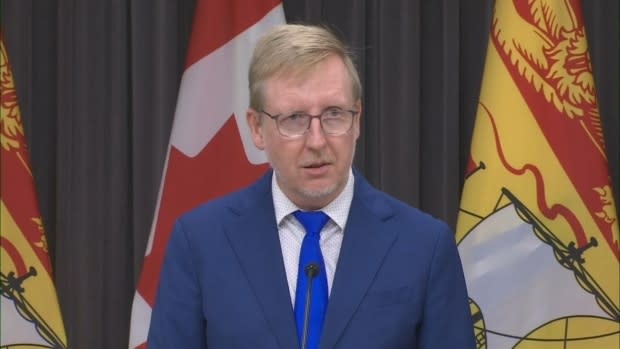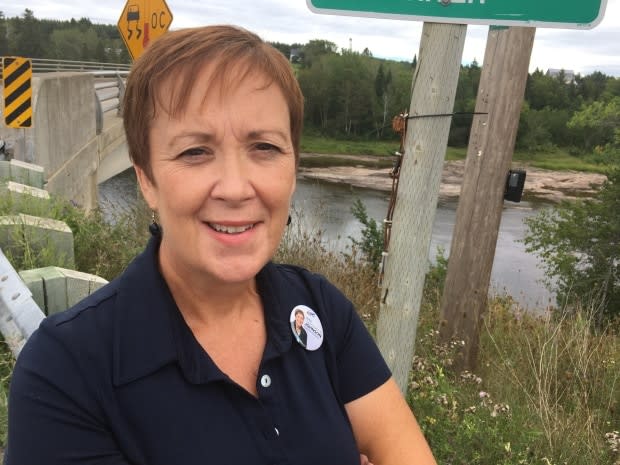Blaine Higgs has more members now, so choosing cabinet ministers may be tough
Things are suddenly easier for Premier Blaine Higgs after his majority government win in this month's election.
Except maybe in one area: creating his cabinet.
Higgs has 26 MLAs to choose from, giving him more options than he had in 2018, but also making the selection that much more difficult — because a larger number of his caucus will have to be left out.
The challenge will be especially acute if the premier opts for a smaller cabinet this time. The current membership is 17, including Higgs himself. Only one of them, Carl Urqhuart, didn't run again.
"Probably premiers put more thought into cabinet selection than anything else they do early in the mandate," says former Carleton Progressive Conservative MLA Stewart Fairgrieve, an adviser to Premier David Alward when he chose his cabinet in 2010.
"It overrules everything and it lays the groundwork for how well your caucus will operate going into the legislature and for years to come."
Decisions, decisions
Higgs is the first premier in 17 years to win re-election, meaning he must decide whether to drop some current ministers to make room for newcomers.
"He has an abundance in terms of quality of candidates that he can choose from, and that's a nice problem to have as premier," said Bernard Lord, the last premier to win re-election.
Dropping someone "is not easy but it's a fact of life, and people who run for office know first and foremost they're running to be a member of the legislative assembly."

Fairgrieve, however, says being dropped "is not an easy transition …. It takes a while to get your head around that." Only three PC MLAs, including him, spent the entire last mandate on the back benches.
Higgs has been meeting his MLAs individually all week, assessing who should make the cut and what position they should occupy.
"A huge amount of time goes into cabinet selection," said Fairgrieve.
Premiers "second-guess themselves. They go back on their lists a hundred times before it gets announced and the ministers get sworn in. There's always surprises, and this cabinet by Blaine Higgs will be no different."
Fine tuning, or major overhaul?
Higgs could take a number of approaches.
If he is inclined to favour continuity, especially in departments teeing up major reforms, he may leave Dominic Cardy at Education and Ted Flemming at Health.
It's debatable how much the individual choices matter, or even whether New Brunswickers care that much who ends up minister of Service New Brunswick or minister for the Regional Development Corporation.
But there are times when the right person is critical, Lord said.

"Just look at what Dominic Cardy was able to do this year with the pandemic. He led the effort for the government to shut down and take tough precautions early."
Fairgrieve said it's hard to imagine Cardy or Flemming being moved mid-pandemic, and said the choices of finance minister and public safety minister will also be important in light of COVID-19 and its economic impact.
He also said Fundy-The Isles-Saint John West's Andrea Anderson-Mason should stay, in recognition of her winning her riding with 66.5 percent of the vote, "but we have a premier who doesn't always take political realities into consideration."
On the other hand, Higgs could opt for a major shakeup.
He may look to the future and give new, younger MLAs a chance to shine, positioning them for the next election in 2024 — especially if the 66-year-old Higgs doesn't plan to run again four years from now and there's a leadership race by then.
Smaller cabinet, gender parity
Fairgrieve said even without a big shuffle, a rumoured smaller cabinet and the suggestion of gender parity would force the premier to drop some incumbents.
"There's going to be a lot of former cabinet ministers, and that never sits well," he says.
With nine women elected as Progressive Conservatives — four incumbents and five newcomers — Higgs can easily name a cabinet with an equal number of women and men.

"I don't think it's a test," Lord said, but "I'm sure it's something the premier will consider and something that could be considered."
At the same time, most premiers strive for some kind of geographic balance.
That might help Margaret Johnson, the new MLA for Carleton-Victoria, the northernmost riding to have voted PC. Johnson would also help with gender parity.
But it makes for a tougher choice in the greater Saint John area, which has no fewer than seven ministers, including the premier himself in the existing cabinet.
To make room for new Saint John Harbour MLA Arlene Dunn, especially in a slimmer cabinet, Higgs would have to drop at least one current minister from the area and probably more.
The regions
There's a similar geographic crunch in the Moncton area, which already has four ministers at the cabinet table: Ernie Steeves, Sherry Wilson, Mike Holland and Bruce Fitch.
Fairgrieve said Higgs can't exclude the only francophone PC MLA, Daniel Allain from Moncton East.

But without someone being dropped, that brings the area's representation up to five, a large share if cabinet is reduced to just 12 or 14 ministers.
Lord said all those calculations matter, but the priority has to be picking a qualified team that can work together.
"First and foremost is considering who around the table can help the premier achieve the agenda and fulfil the mandate that he's received from the people of New Brunswick. That's the most important thing.
"Then, of course, you look at representation, geography, and so many other factors as well."


